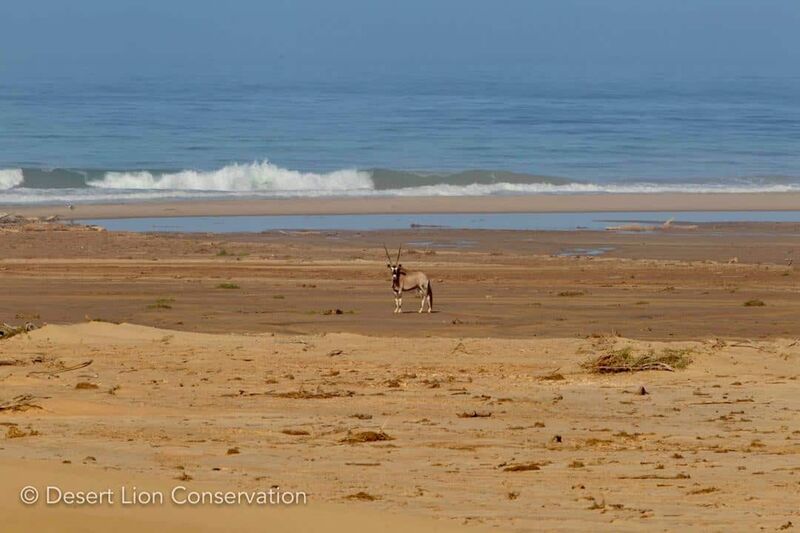Evaluation of environmental conditions
Tuesday 20 April 2021
Understanding the movements of the Orphan lionesses
Below average rainfall during recent years have resulted in hyper-arid conditions in the Northern Namib. The conditions have had severe impacts on the local communities, livestock farmers and wildlife alike. A large proportion of the lion population have struggled to find find sufficient prey and many individuals have moved excessive distances in search food. Some lions have moved towards human settlements that resulted in numerous incidents of human-lion conflict. Since July 2002 a total of six adult lionesses have deteriorated in condition and either died from starvation or were humanely euthanised by the Ministry of Environment , Forestry and Tourism. These event occurred throughout the study area, ranging from the Ugab river, the Twyfelfontein area of the Huab river, sections of Torra Conservancy and the Mbakondja area of Anabeb Conservancy.
The expansion of the home range of the Orphan lionesses, from the Hoanib Floodplain, to the Hoaruseb river in January 20201 is related to the food shortage experienced by lions throughout the Northern Namib. An analysis of their movement patterns and feeding success is presented here for a period of 110 days between 1 Jan 2021 and 20 Apr 2021 (see Map 1).
Map 1. Movement patterns of the two Orphan lionesses between 1 Jan 2021 and 20 April 2021.
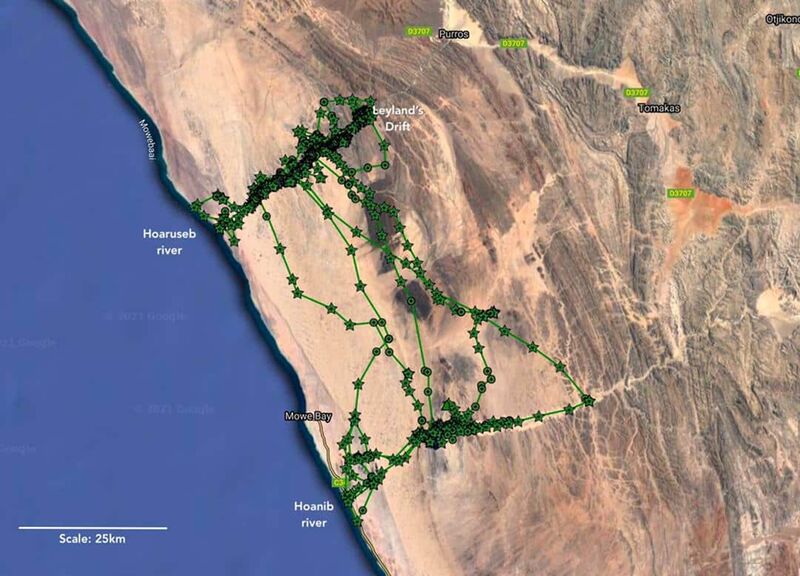
During this period the lionesses moved a total distance of 1138 km at an average of 11.7 km per day. They arrived at the lower Hoaruseb river for the first time on 5 Jan 2021 and remained there for 28 days before returning to the Hoanib Floodplain. After 14 days they returned to the Hoaruseb river for another 38 days. A detailed layout of their movements and food intake for the entire period is presented in Table 1.
Table 1. Movements and food intake of two adult lionesses in the Hoanib and Hoaruseb rivers between 1 Jan 2021 and 20 April 2021.
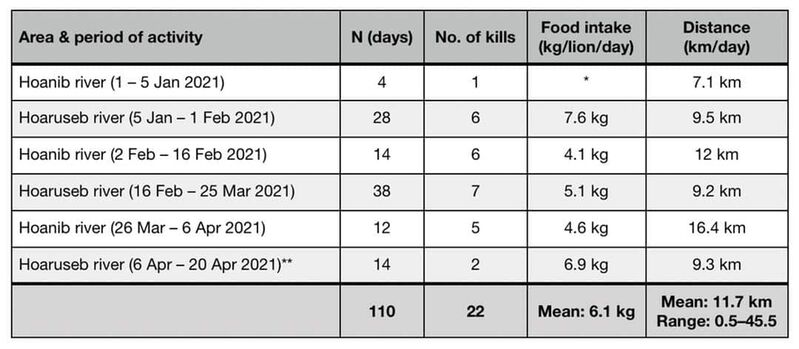
During this period of 110 days the lions captured 27 prey animals with gemsbok contributing to 52% of their food items (Table 2). On average the lions made a kill every 5.1 days (Std dev = 4.07) with a range of 1 to 15 days between kills.
Table 2. Prey species killed and consumed by two lionesses between 1 Jan 2021 and 20 April 2021.
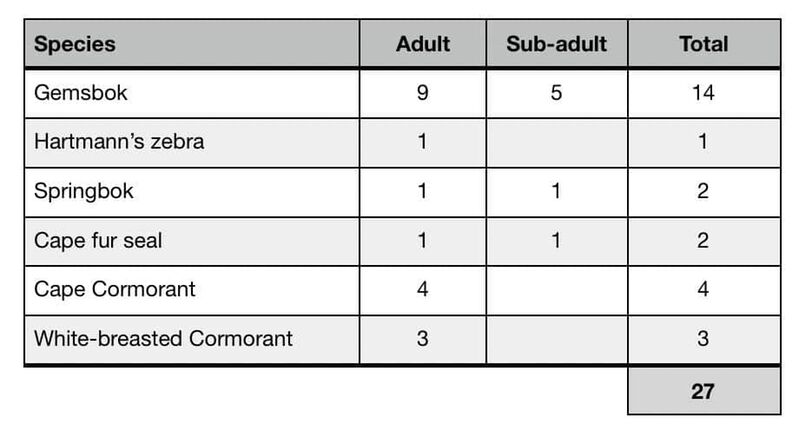
When the lionesses arrived at the lower Hoaruseb river they found an abundance of prey species, such as gemsbok, that had not encountered lions for almost a decade. As a result, the lions were successful in capturing the unsuspecting prey. These ideal conditions, however, did not last long and as soon as the area received rainfall and the ephemeral rivers came down in flood, the prey animals dispersed. Since the average frequency between kills was 5 days, it was decided to calculate the daily per-capita food intake for consecutive periods of 10 days [{Biomass/10}/2]. When these results are plotted over time (Graph 1), the results show an average per-capita food intake of 7.6 kg/lion/day from Jan 2021 to 10 Mar 2021, when the rains started. With rain showers falling in the region and the flooding of the ephemeral rivers, most of the prey animals dispersed and the lions had to work a lot harder to find food. Between 10 Mar and 20 April 2021, their per-capita food intake dropped to 4.1 kg/lion/day. During the initial period of plenty the lionesses moved an average distance of 9.4 km/day, but after the start of the rains they exerted more energy by moving an average of 12.5 km/day to acquire approximately 60% of the food they enjoyed previously.
Graph 1: Daily per-capita food intake for two lionesses calculated for ten-day intervals between 1 Jan 2021 and 20 April 2021.
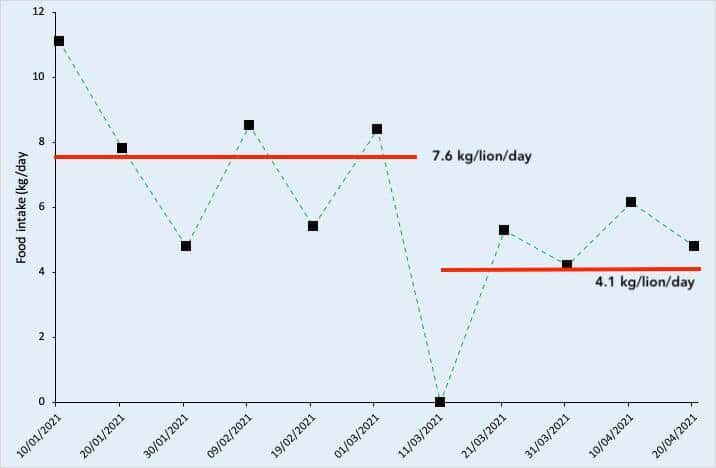
The rains are continuing to fall throughout the Northern Namib and conditions are likely to get worse for the lion population during the following months.
Cloud cover over the lower Hoaruseb river during midday
Rain clouds and rainbows decorate a sand dune in the Hoaruseb river
Two lionesses on the northern bank of the Hoaruseb river
Mouth of the Hoaruseb river
The lower section of the Hoaruseb river has dried-up substantially and vehicles can access limited section of the ephemeral river. The riverbed is still treacherous, however, and vehicles can get bogged down with the added risk of more floodwaters arriving at anytime. The two Orphan lionesses have moved to the mouth of the Hoaruseb river where they have been hunting a herd of gemsbok that utilise green vegetation at a fresh-water spring next to the beach.
Shipwreck Lodge are thanked for assistance to free a bogged-down research vehicle
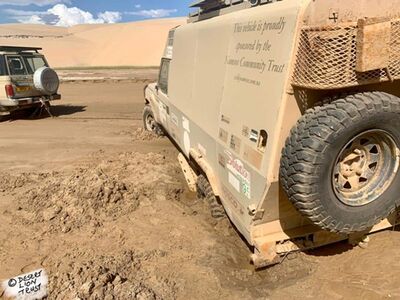
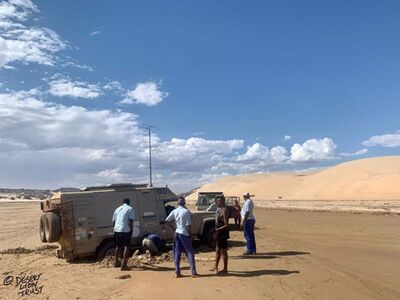
Gemsbok approaching a fresh-water spring at the mouth of the Hoaruseb river
Two lionesses moving past Shipwreck Lodge at dawn.

